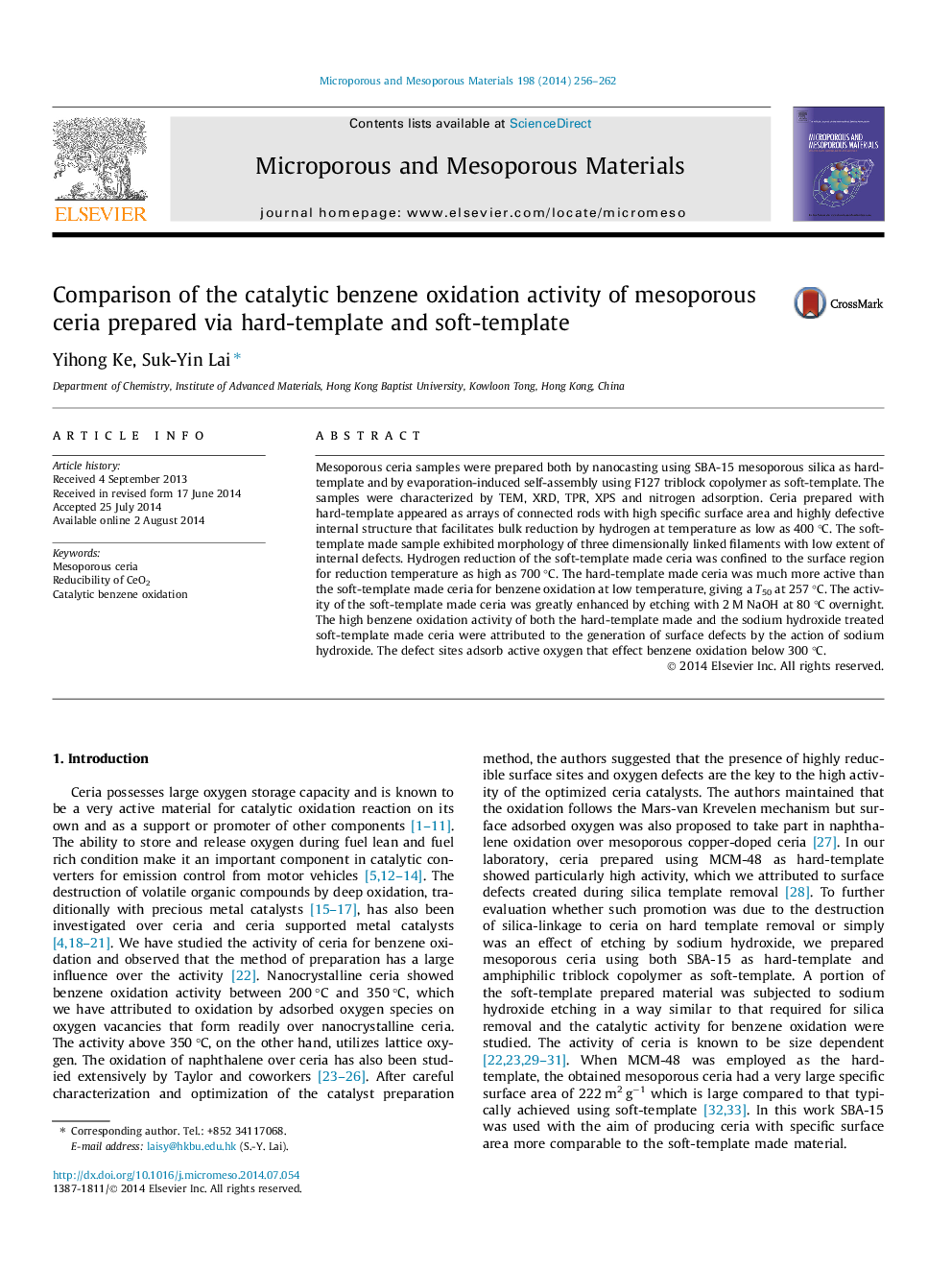| Article ID | Journal | Published Year | Pages | File Type |
|---|---|---|---|---|
| 72956 | Microporous and Mesoporous Materials | 2014 | 7 Pages |
•Extensive internal defects facilitate bulk reduction of hard-template made ceria.•Hard-template made ceria is active for benzene oxidation at low temperature.•Ceria made with soft-template has smooth surface and little internal defects.•This ceria has poor benzene oxidation activity that can be enhanced by NaOH etching.
Mesoporous ceria samples were prepared both by nanocasting using SBA-15 mesoporous silica as hard-template and by evaporation-induced self-assembly using F127 triblock copolymer as soft-template. The samples were characterized by TEM, XRD, TPR, XPS and nitrogen adsorption. Ceria prepared with hard-template appeared as arrays of connected rods with high specific surface area and highly defective internal structure that facilitates bulk reduction by hydrogen at temperature as low as 400 °C. The soft-template made sample exhibited morphology of three dimensionally linked filaments with low extent of internal defects. Hydrogen reduction of the soft-template made ceria was confined to the surface region for reduction temperature as high as 700 °C. The hard-template made ceria was much more active than the soft-template made ceria for benzene oxidation at low temperature, giving a T50 at 257 °C. The activity of the soft-template made ceria was greatly enhanced by etching with 2 M NaOH at 80 °C overnight. The high benzene oxidation activity of both the hard-template made and the sodium hydroxide treated soft-template made ceria were attributed to the generation of surface defects by the action of sodium hydroxide. The defect sites adsorb active oxygen that effect benzene oxidation below 300 °C.
Graphical abstractFigure optionsDownload full-size imageDownload as PowerPoint slide
